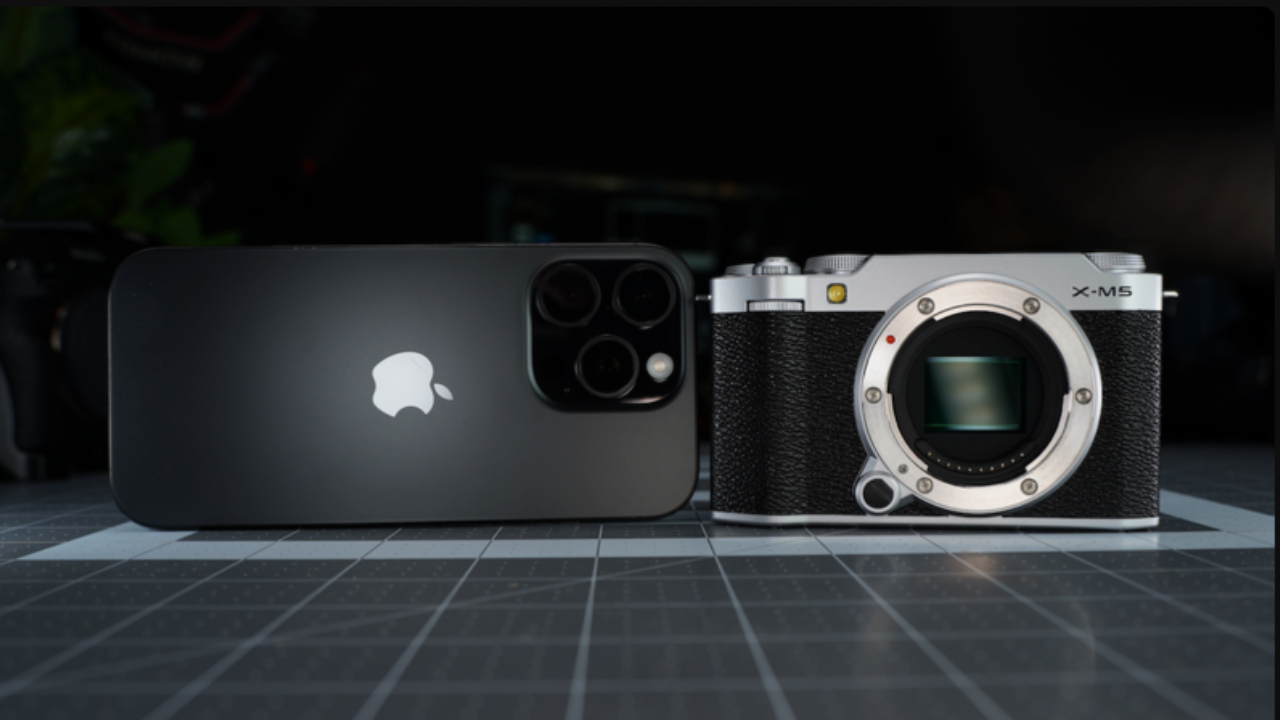
iPhone 16 Pro vs Fujifilm X-M5: Can a Smartphone Really Replace My Camera?
Jan 13, 2025Okay, photography fanatics and curious minds, let's dive deep into a debate that's been raging since smartphones started packing serious camera tech: can your pocket powerhouse truly replace a dedicated camera?
I recently grappled with this question myself, pitting the mighty iPhone 16 Pro against the enticing Fujifilm X-M5. One's a sleek, do-it-all device that's always with you, the other a dedicated image-making machine promising superior quality and creative control.
I also made a Youtube Video on this comparison, so you can check it out after you read this blog post.

The Battle Lines: Specs and First Impressions
The iPhone 16 Pro boasts a 48MP sensor, shoots 4K video at a buttery smooth 120fps, and even offers Apple ProRes for video nerds. It weighs a mere 199 grams and slips effortlessly into your pocket. Starting at $999, it's a tempting proposition for anyone seeking convenience and power.
In the other corner, we have the Fujifilm X-M5. This entry-level mirrorless camera packs a 26MP APS-C sensor, shoots 4K at 60fps, and can even capture 6K footage at 30fps. With Fujifilm's renowned film simulations and interchangeable lenses, it's a gateway drug to a world of photographic possibilities. At $799 (body only), it seems like a steal, but factor in lenses and accessories, and the cost quickly climbs.
The Low-Light Struggle: Where Sensors Matter
This brings us to the heart of the matter: sensor size. The X-M5's APS-C sensor is significantly larger than the iPhone's, and this makes a world of difference, especially in low light. Larger sensors gather more light, resulting in cleaner images with less noise. Think of it like buckets collecting rainwater – a bigger bucket catches more, even in a light drizzle.
This advantage was glaringly obvious when I shot a fountain at night. The X-M5 captured the scene beautifully, with crisp details and minimal noise. The iPhone, on the other hand, struggled to keep up, producing a muddy, less defined image.

Beyond the Pixels: Form Factor and Usability
Image quality is paramount, but it's not the whole story. The iPhone's sleek design and intuitive interface make it a joy to use. It's always in your pocket, ready to capture a fleeting moment. But there's something undeniably satisfying about the X-M5's tactile controls and classic form factor. The physical dials and buttons provide a sense of control and connection that a touchscreen simply can't replicate.
However, this comes at a cost. The X-M5 is bulkier and requires a dedicated camera bag. Changing lenses can be cumbersome, especially in less-than-ideal conditions. And let's be honest, sometimes the best camera is the one you have with you, and that's often the iPhone.
Versatility: The Power of Interchangeable Lenses
One area where the X-M5 truly shines is its versatility. With a wide array of Fujifilm lenses, you can capture everything from wide-angle landscapes to intimate portraits. This creative freedom is simply unmatched by the iPhone's fixed lens system.
I experimented with several lenses on the X-M5, including a wide-angle lens for sweeping vistas and a fast prime lens for shallow depth-of-field effects. Each lens opened up new creative possibilities, allowing me to capture the world in a unique way.

The Creative Edge: Film Simulations and Manual Control
Fujifilm is renowned for its film simulations, which emulate the look of classic film stocks. These in-camera presets add a unique aesthetic to your images, allowing you to achieve a variety of looks without the need for extensive post-processing.
The X-M5 also offers a wealth of manual controls, giving you complete control over exposure, focus, and other parameters. This level of control can be intimidating for beginners, but it's a powerful tool for those who want to improve their photography.
The Verdict: A Matter of Priorities
So, which camera is best? It depends on your priorities. If you value convenience, portability, and ease of use above all else, the iPhone 16 Pro is a fantastic choice. Its capable camera can capture stunning images and videos in a variety of situations.
But if you're serious about photography, crave creative control, and are willing to invest in a system that will grow with you, the Fujifilm X-M5 is the clear winner. Its superior image quality, interchangeable lenses, and tactile controls make it a joy to use and a powerful tool for creative expression.

My Personal Journey
For me, the X-M5 rekindled a dormant passion for photography. While the iPhone is still my go-to for everyday snapshots, when I want to create something special, I reach for the X-M5. It's a camera that encourages me to slow down, observe my surroundings, and capture the world with intention.
Your Next Steps
No matter which camera you choose, remember that the most important tool is your own creativity. Experiment, explore, and have fun! If you're still deciding, I encourage you to try both cameras and see which one speaks to you.


